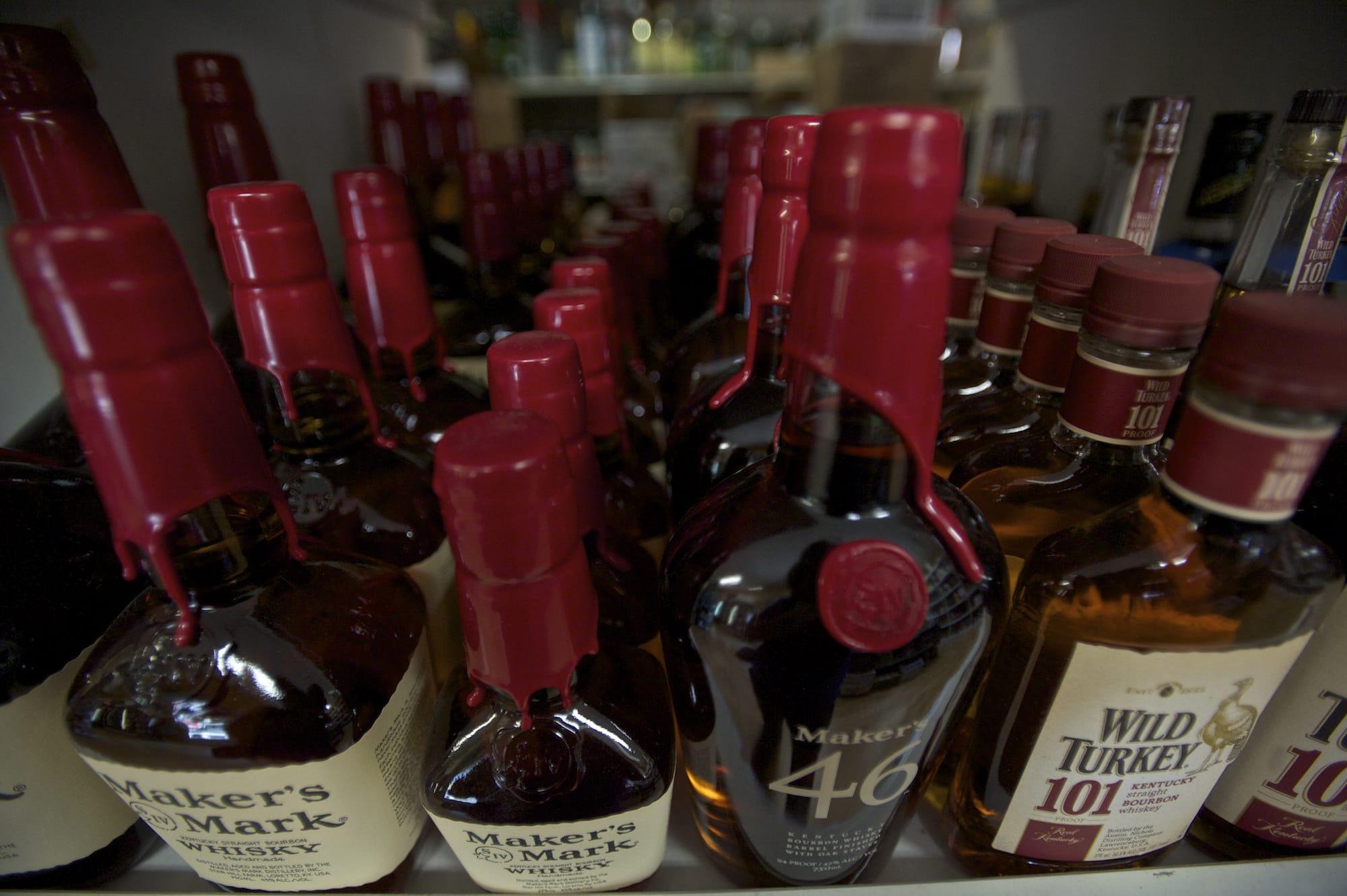BELLINGHAM — Liquor privatization may have led to more convenience for consumers in Washington state, but they are not seeing lower prices.
Sunday, June 1, marked the second anniversary of Initiative 1183 going into effect, turning over sales of liquor from state-run stores to retail businesses. Despite the jump in prices, the number of liters sold increased by 1.1 million (out of a total of 42 million liters) in the 16 months following the change to liquor privatization.
However, the most recent months of data indicate sales have slowed, according to the Washington Department of Revenue.
Along with prices remaining high, perhaps the most striking difference two years into liquor privatization is the dwindling number of former state-run stores in Washington. In April 2012, prior to privatization, 166 state-run liquor stores existed in the state.
Washington held an auction, selling nearly all of the state-run stores to private entrepreneurs. By April 2014, 113 of these stores were still open, a 32 percent decrease.
An uneven playing field was created as the big-box stores were able to get volume discounts, said Brian Smith of the Washington State Liquor Control Board.
“1183 continues to have a few ongoing issues,” Smith said.
The average price for a liter of spirits sold in March, including taxes, was $24.67, a 38-cent increase compared to the year before. In each of the seven previous months, the average price was higher than the same period a year earlier.
The average liter price in June 2011, a year before the new fees and higher taxes from the initiative went into effect, was $21.35.
In terms of taxes, no changes are expected in 2014. In the last state legislative session a bill was proposed to gradually lower the tax from 20.5 percent to 6.5 percent over the next eight years. That bill did not make it out of committee for a final vote.
COMPETITION TOUGH FOR FORMER STATE STORES
The biggest drop in former state-run liquor stores has come in King County, where nearly half of the stores have closed in a 24-month period.
In June 2012 Whatcom County had five former non-contract, state-run stores, four in Bellingham and one in Ferndale. Of those, only the Lakeway Center store has closed.
With grocery stores, pharmacies and national chains entering the Bellingham market, sales at former state stores quickly declined. While it’s challenging, particularly when it comes to pricing, some are finding ways to survive. At the Liquor Depot, near Lowe’s Home Improvement, focusing on special products and sizes that are difficult to find has become a niche for the Barkley store, said manager Tiffney Sturgeon.
“We are able to track down that special bottle that you can’t find in other stores,” Sturgeon said, adding that the store is becoming known for its selection.
The store also has found success by hosting product tasting events, particularly with new products.
“People are going to buy what they know, so (the samples are important) so that they can try out a bottle that might be a few dollars more,” Sturgeon said.
THEFT, ER VISITS A CONCERN
With the convenience of all the additional stores, Smith said one concern that remains two years later is theft. Placement of the liquor was changed and security improved in some of the stores, he noted, but more needs to be done.
In a report presented last week to the Liquor Control Board about the impact of I-1183, the authors concluded that theft is “a substantial problem resulting in increased spirit access and lost revenue.”
One issue in measuring the scope of the theft problem is that no systematically collected data is available, according to report authors Linda Becker of the Washington State Department of Social and Health Services and Julia Dilley of the Oregon Health Authority.
However, based on a variety of sources including media stories and police reports, indications are that thefts have increased substantially, and some stores are reluctant to report the thefts to law enforcement.
In a phone interview, Becker, who is a senior prevention research manager, said the most striking part of the study to her was the increase in alcohol-related emergency room visits in King County. In the 16 months following liquor privatization, more than 5,500 alcohol-related visits were made to emergency rooms. That’s 50 percent more than they expected.
Becker said they focused on King County because it had the best available data.
Alcohol is dangerous, Becker said, and the data makes her wonder if that message is getting out there, particularly to youth. The increases in emergency room visits were most significant in teens/young adults as well as men and women over 40.
In Whatcom County, a 2012 Washington Healthy Youth Survey indicates 39 percent of 12th graders and 25 percent of 10th graders reported drinking at least once in the past month.
Statewide, one thing that has improved in the past two years is the compliance rate when it comes to not selling spirits to minors, Smith said. Compliance rates are above 90 percent and youth drinking has declined, following national trends, according to the I-1183 impact report.
One area that needs more research is drunk driving, according to the report. While inconclusive in determining whether liquor privatization is having an impact, DUI arrests are down, following national trends.



